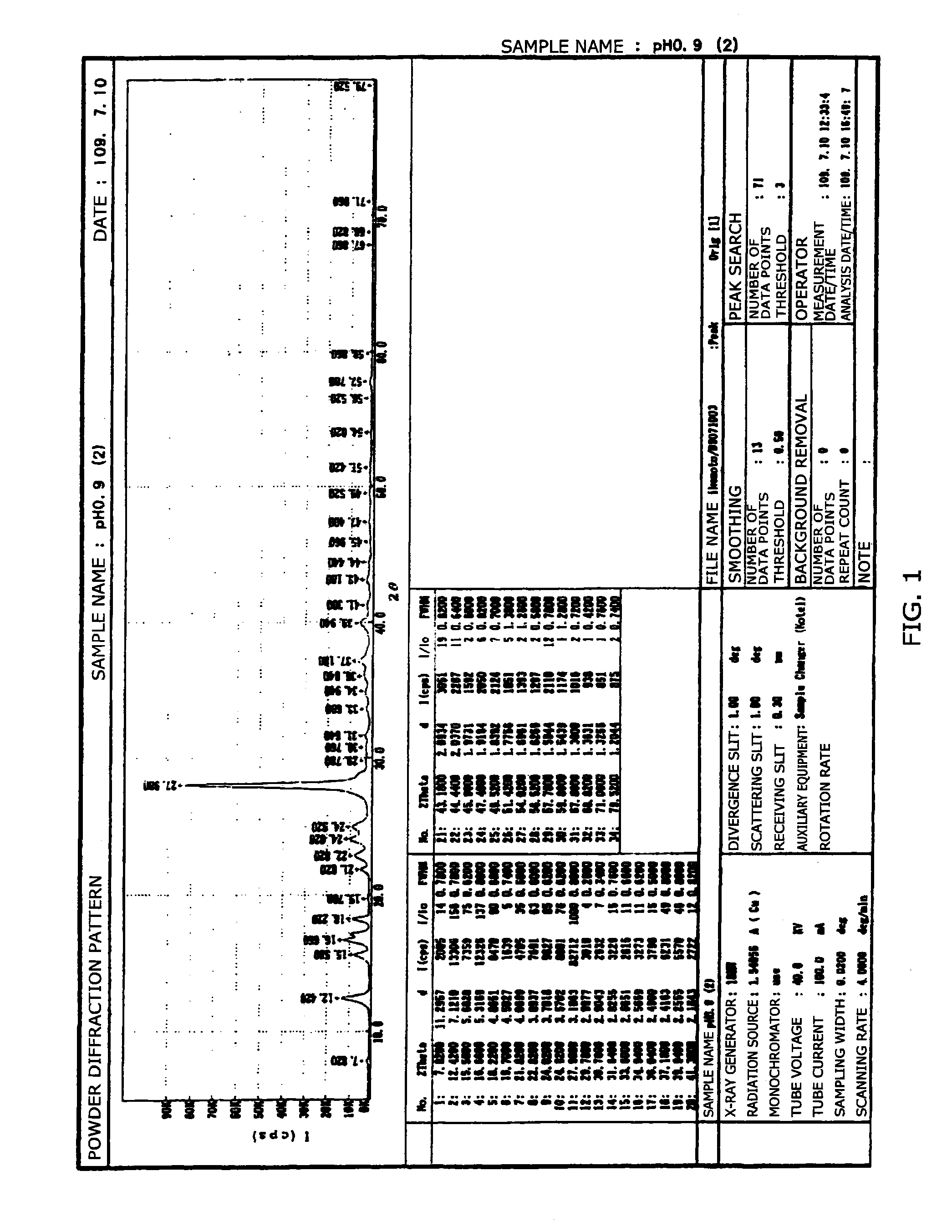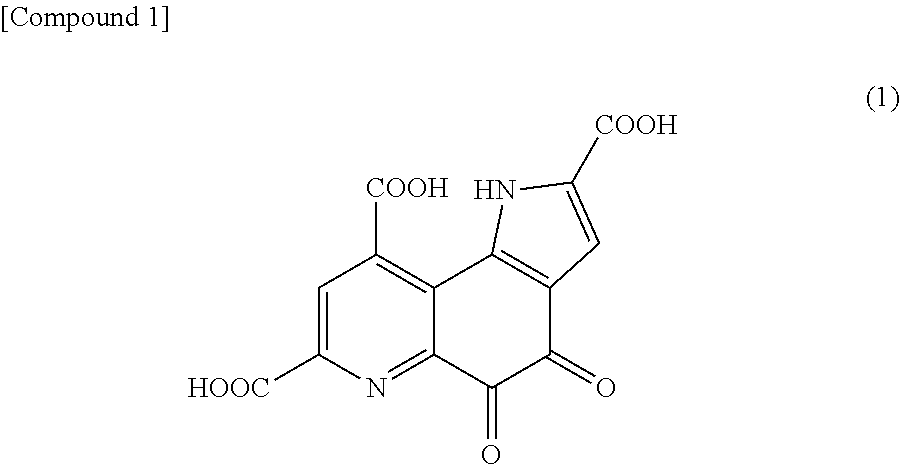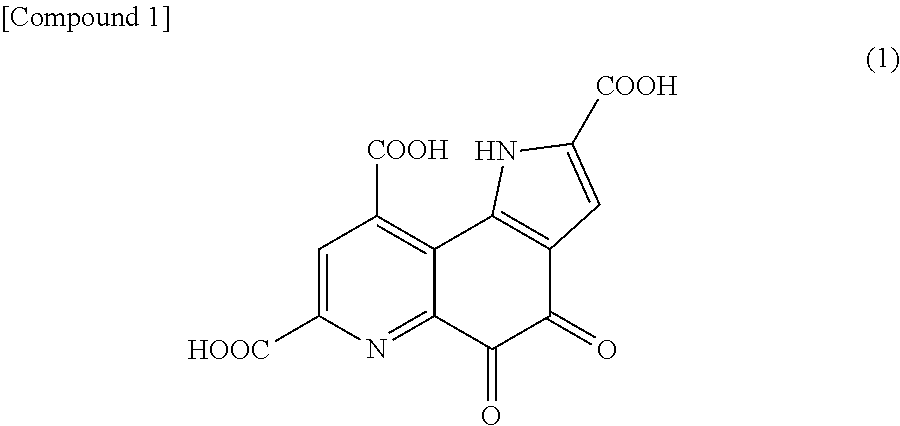Pyrroloquinoline quinone in free form
a production method and quinone technology, applied in the field of pyrroloquinoline quinone, can solve the problems of inefficiency of process, high cost, and the application of extraction devices to organic solvents, and achieve the effects of low alkali metal content, good crystallinity, and high purity
- Summary
- Abstract
- Description
- Claims
- Application Information
AI Technical Summary
Benefits of technology
Problems solved by technology
Method used
Image
Examples
example 1
[0099]A reagent (trade name: BioPQQ) from MITSUBISHI GAS CHEMICAL COMPANY, INC. was used as the raw material PQQ disodium salt. The PQQ disodium salt had a purity of 99.0% as determined by UV absorption on high performance liquid chromatography.
[0100]To 198 g of water, 2 g of the disodium salt mentioned above were added to obtain an aqueous solution of disodium salt. To the resultant solution, NaOH was added to adjust the pH to 9. To this solution, 7.7 g of a solution obtained by subjecting concentrated hydrochloric acid (from Wako Pure Chemical Industries, Ltd.) to dilution by 50% with water were added to adjust the pH to 0.9. After a 30-minute stirring, the precipitated solid was filtered and washed with water and isopropanol. This substance was dried at 50° C. and a reduced pressure overnight. The red crystals collected weighed 1.6 g. The Na analysis shows that PQQ in the free form having a Na content of 0 and thus containing no sodium was obtained by the simple method. The resul...
example 2
[0101]The raw material in Example 1 (PQQ disodium salt) was dissolved in water. To the solution, sodium hydroxide was added to adjust the pH to 8, followed by addition of sodium chloride for precipitation of PQQ trisodium salt. The precipitated PQQ trisodium salt was then washed with ethanol and dried. This salt was used in the subsequent experiment.
[0102]In water (60 g), 0.9 g of the PQQ trisodium salt was dissolved. To this were added about 2 g of concentrated hydrochloric acid while stirring. The resultant solution had a pH of 0.6. After overnight stirring, the solution was filtered, and the residue was washed with isopropanol and dried under reduced pressure to obtain 0.35 g of red solid. The results of powder X-ray diffraction and Na analysis for the red solid obtained were similar to those in Example 1, and indicated no residual sodium in the red solid. It was shown to be pyrroloquinoline quinone crystals in the free form.
example 3
[0103]To a mixed solution of 3.5 g of concentrated hydrochloric acid and 3.5 g of water, 1 g of the same PQQ disodium salt solid as one in Example 1 was added to adjust the pH of the solution to 1. After stirring at room temperature for one hour, the solution was filtered. The residue was washed with water and dried under reduced pressure to obtain 0.79 g of red solid. The molar ratio of sodium to PQQ in the resultant red solid was 0.06, indicating that a small amount of sodium remained in the solid.
PUM
| Property | Measurement | Unit |
|---|---|---|
| 2θ | aaaaa | aaaaa |
| 2θ | aaaaa | aaaaa |
| 2θ | aaaaa | aaaaa |
Abstract
Description
Claims
Application Information
 Login to View More
Login to View More - R&D
- Intellectual Property
- Life Sciences
- Materials
- Tech Scout
- Unparalleled Data Quality
- Higher Quality Content
- 60% Fewer Hallucinations
Browse by: Latest US Patents, China's latest patents, Technical Efficacy Thesaurus, Application Domain, Technology Topic, Popular Technical Reports.
© 2025 PatSnap. All rights reserved.Legal|Privacy policy|Modern Slavery Act Transparency Statement|Sitemap|About US| Contact US: help@patsnap.com



